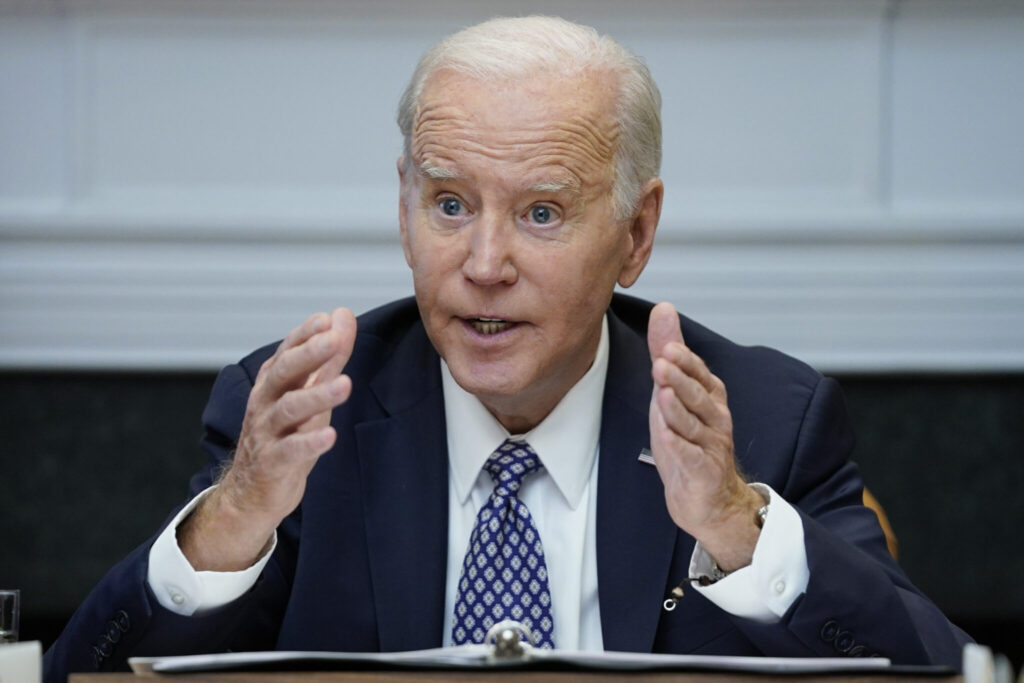President Joe Biden‘s administration officials went looking outside the U.S. for migration solutions, seeking to portray immigration not as one of America’s most intractable problems, but as an issue for the entire Western hemisphere to address. It was a shift in focus that plays to Biden’s faith in the power of global diplomacy, and one that also may hold more promise for making progress, particularly as smuggling networks increasingly steer migrant families from around the world up through the dangerous and often deadly Darien Gap between Colombia and Panama. “No nation should bear this responsibility alone.” Biden said last year as he summoned the leaders of 23 nations attending a Summit of the Americas to come up with a shared plan on migration and security. “The economic futures depend on one another. Each of our futures depend on one another. And our security is linked in ways that I don’t think most people in my country fully understand”, according to the Associated Press:
Biden leans into Global Diplomacy for migration
Newslooks- WASHINGTON (AP)
On President Joe Biden ‘s first day in office, he handed Congress a legislative plan to modernize the nation’s immigration system. It went nowhere, just like so many past overhaul attempts. Meanwhile, the number of migrants illegally crossing the U.S.-Mexico border climbed to record highs and so did the backlog of cases in the nation’s immigration court system. Title 42 emergency health powers that allowed border officials to turn away many migrants were sure to end as the coronavirus pandemic eased. And Congress couldn’t agree on even simple questions like whether the U.S. should let in more people, or fewer.
So administration officials went looking outside the U.S. for solutions, seeking to portray immigration not as one of America’s most intractable problems, but as an issue for the entire Western hemisphere to address.
It was a shift in focus that plays to Biden’s faith in the power of global diplomacy, and one that also may hold more promise for making progress, particularly as smuggling networks increasingly steer migrant families from around the world up through the dangerous and often deadly Darien Gap between Colombia and Panama.
“No nation should bear this responsibility alone.” Biden said last year as he summoned the leaders of 23 nations attending a Summit of the Americas to come up with a shared plan on migration and security. “The economic futures depend on one another. Each of our futures depend on one another. And our security is linked in ways that I don’t think most people in my country fully understand.”
If the solutions for Biden are international, the politics are still domestic.
He’s running for reelection, and the border is a top issue for Republicans who portray him as soft on security. His involvement in immigration policy before he became president was relatively light. Prior to this year’s visit, he’d only been down to the 1,951-mile U.S.-Mexico border for a few hours during a 2008 campaign stop, and he played no significant role in past reform efforts in the Senate when he served there.
His foreign policy experience, though, stretches back decades from his years on the Hill and through his two terms as vice president, and that carries weight internationally.
“No other president who has sat in the Oval Office has the mileage, the understanding, the engagement that Joe Biden has had in the region. It’s just a fact,” said Arturo Sarukhan, the Mexican ambassador to the U.S. from 2007 to 2013. “That is an important add that Biden brings to the table.”
Sarukhan said Biden’s approach has focused on engagement and negotiation, by sending top leaders to the region for discussions, and through invitations to Washington. “Biden hasn’t put the gun to anyone’s forehead,” he said.
But immigrant advocates worry there’s a cost to the new approach that will likely be paid by migrants who are fleeing persecution and poverty in their homelands.
“I do think they are trying to manage migration, rather than end migration,” said Yael Schacher, director for the Americas and Europe at Refugees International. “But managing migration can also have human rights, terrible human rights, consequences. There’s a moral distancing — the possibility for wiping your hands of a problem if it isn’t at your door anymore.”
The makeup of those migrating has changed dramatically over the past two decades, bringing new challenges as well.
Those crossing the border used to be mostly Mexican men who were coming for work and could be easily sent back. Now, families are increasingly arriving from Guatemala, Nicaragua, Venezuela and Haiti, fleeing drought brought on by climate change as well as oppressive regimes.
It reflects a larger trend. UNHCR, the United Nations refugee agency, estimates 103 million people are displaced globally — more than 1% of the world’s population.
“We are finding ourselves in a unique moment and we do have to understand it’s not a domestic issue, but a regional and global one,” said Krish O’Mara Vignarajah, head of Lutheran Immigration and Refugee Service, which helps migrants and refugees in the U.S.
The number of illegal U.S.-Mexico border crossings has been declining since new rules were put into place by the Biden administration on May 11, but it’s not clear yet whether the administration’s approach will be effective in the long term or whether it can survive legal challenges and a possible administration change in 2024.
Under the new rules, migrants are barred from asking for asylum if they cross through another country on their way to the U.S. without seeking protection there or fail to make an appointment to come to the U.S. through a new government app. If caught crossing illegally, they are barred from returning for five years and face criminal charges if they do.
But up to 30,000 Venezuela, Haitians, Nicaraguans and Cubans per month will be allowed into the U.S. to work legally if they come with sponsors. And as many as 100,000 immigrants from Honduras, Guatemala, El Salvador and Colombia will be allowed in if they have family members who are U.S. citizens or lawful permanent residents.
The leaders of Mexico and several other nations had boycotted the June summit in Los Angeles over a decision to exclude authoritarian leaders. Still, it ended with a signed pact and set of principles that included legal pathways to enter countries, aid to communities most affected by migration, more humane border management and coordinated emergency responses.
Administration officials then set to work on new immigration rules that would take effect once Title 42 ended, with new directives that aim to expand legal pathways for entry while cracking down on illegal crossings, intertwined with actions by Guatemala, Ecuador and Colombia. They negotiated with Mexico. Canada and Spain to take in migrants who would otherwise be bound for the U.S.
Guatemala and Colombia will open regional hubs where people can go to make claims, with as many as 100 opening regionally. But Colombia and Guatemala fear the hubs might draw millions to their shores, and other nations are reluctant to sign on to host hubs for that reason.
Meanwhile, many migrants remain in limbo. Last week, advocates said the new migrant app was having major problems and that people were unable to get the OK to cross – some who desperately needed to get into the U.S., who were sexually assaulted and beaten by their captors over the border.
”Understand that what the people who are terrified to return to their home countries who are seeking asylum, they want to do this the right way so badly that they wait for an app that does not work,” said Priscilla Orta, an immigration attorney at Project Corazon. “And that is a lottery for their lives.”







